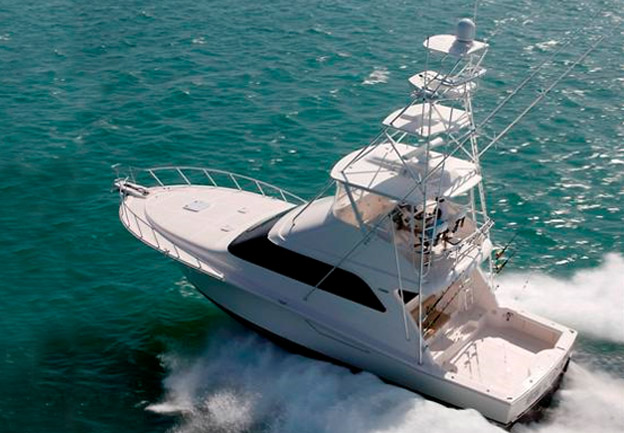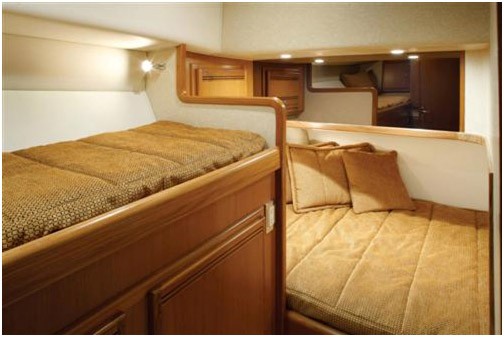- Alaskan Yachts
- Azimut Yachts
- Back Cove Yachts
- Beneteau Yachts
- Benetti Superyachts
- Bertram Yachts
- Boston Whaler
- Broward Yachts
- Buddy Davis Sportfish
- Burger Yachts
- Cabo Yachts
- Catamarans
- Carver Motoryachts
- Center Console
- Chris-Craft Yachts
- Cruisers Yachts
- DeFever Trawlers
- Dufour Sailboats
- Fairline Yachts
- Feadship Yachts
- Ferretti Yachts
- Formula Yachts
- Fountaine Pajot Cats
- Grady-White
- Grand Banks Trawlers
- Hargrave Yachts
- Hatteras Yachts
- Hinckley Picnic Boats
- Horizon Yachts
- Hydra-Sports
- Intrepid Boats
- Jarrett Bay Sportfish
- Jeanneau Yachts
- Kadey-Krogen Trawlers
- Lazzara Yachts
- Luhrs Sportfish
- Marlow Yachts
- Maritimo Yachts
- Marquis Yachts
- McKinna Motoryachts
- Meridian Yachts
- Midnight Express
- MJM Yachts
- Mochi Craft
- Neptunus Motoryachts
- Nordhavn Trawlers
- Nordic Tugs
- Ocean Alexander Yachts
- Offshore Yachts
- Outer Reef
- Oyster Sailing Yachts
- Pacific Mariner Yachts
- Palmer Johnson Yachts
- Pershing Yachts
52 Cabo Flybridge 2009
![]()

Source: Power & Motoryacht Magazine
Let’s cut to the chase – Cabo has gotten to where it is today by building better boats than its cheap competition, and lower-priced boats than its high-quality competition. Cabo builds the important things right, yet does not lavish money on fine-yacht grade joiner work, gadgets, complex systems, re-inventing the wheel, and expensive marketing eyewash. What you see is what you get, and if you don’t see it, chances are it’s not there. For the last five years or so Cabo has given Bertram and Viking fits at the small end of their lines, and now it takes on the big battlewagons of the big three – Bertram, Hatteras and Viking.
Unfortunately, these days there are only six major production boat companies world-wide building convertibles in the 52’ to 55’ range. In addition to the big three there is Ocean Yachts, Riviera and Maritimo. Now, with Cabo entering the 50’+ ranks, there are seven. Some of those builders offer two models in that range so a buyer may find himself with, say, a total 12 or 13 models to choose from. Not many.
All seven of these builders know what they are doing, are experienced, and are building good boats. In many respects they are all very similar. But what differentiates them? Isn’t one slightly larger than another, or a better value, or more seaworthy, or faster, or more luxurious below, or have a better warranty, or better for entertaining or cruising, or be more comfortable in some other way?
The answer is a resounding “yes” to all of those questions. To find the right boat for any individual is a matter of lining up one’s priorities and then looking very closely.
Cabo is 18 years old and as such is the newest major convertible builder on the American scene and its rise has been nothing short of meteoric. Clearly its founders knew what they were doing. Now the company is owned by Brunswick which also owns Hatteras which builds a competitive 54-footer.
The Cabo Niche
If we had to pick one theme over the years for Cabo, we would say that is “good value.” Cabo’s mission has always been to build a seaworthy boat with all of the fishing amenities for the expert angler who didn’t need to spend money on fine-yacht joinery and lots of glitzy gadgets. And since Cabo was the newest company attacking each market as it slowly built larger and ever large boats, it had the advantage of surveying the existing competition and do them all one better. Cabo has made a career of doing just that and has sold over 1200 boats since it started in business in 1991. That’s an average of 67 boats a year which is a lot for this market in this size range.
Her lines are pretty standard for an American convertible. The 52 has a soft and graceful sheer swooping down to her cockpit coaming. Her cockpit has all of the fishing amenities one would expect, including a 75 gallon live bait well in the transom with picture window, refrigerators and freezers under the mez seating and large fish boxes in the cockpit sole. Her cockpit is not only wide but also ample fore and aft, and there is plenty of room for a mate behind the fighting chair to keep it pointed in the right direction at all times.

Steaming Speed
According to the folks at Cabo, the boat can go over 40 knots with the C-32 1675-hp Cats. That is the holy grail of many tournament fishermen. Pull her back to something more reasonable, say, 1600 rpms, and she goes around 28 knots, according to Cabo, giving her a range of about 475 n. miles. Cabo says she is on plane at 1200 rpms which will get her 550 n. miles at 14 knots. She carries 1400 gallons of fuel which means when you slow her down you can go a long way. For example, at 25 knots you can easily make it from St. Pete to Isla Mujeres, Mexico if you want to fish off Cozumel. That would probably be your longest distance between fuel stops in the whole Caribbean.
Construction
The Cabo 52 flying bridge model has the same hull as the Cabo 52 Express that has proven itself over the seasons. The hull has a Divinycell core with an E-glass layup schedule vacuum-bagged with vinylester resin. These are SOTA construction techniques and materials. E-glass and Divinycell, together with the resin infusion, assure that the glass to resin ratio is optimum. This is one of the reasons that the boat is lighter than some of her competitors. We like vinylester resin because it stops water migration to the core, and on the Cabo it is not just a skin coat to avoid blistering. The surface of her hull is ISO/NPG gel coat.
Her warped bottom hull is relatively deep forward and has a 16-degrees deadrise at the transom. This is a nice compromise between a good ride in a head sea and speed when conditions allow.
 Below
Below
The main salon, dinette and galley are all pretty much the standard arrangement. The galley has two sinks and a four-burner cooktop which is a bit better than some boats we know of this size. Below, the master stateroom is to port and has an en suite head. Forward is the VIP stateroom which is nestled in the bow, and shares a head with the guest stateroom. Both heads are snug, but they both have separate shower stalls. Joinery work and cabinetry quality are what you will find on all of the Cabos no matter what the size.

This guest cabin is the most unique layout on the boat. The single bunk is alongside the hull and takes advantage of hull flare, and note that hanging lockers are below. The athawartship bunk is a double, something we’ve never seen in this class of boat.
She appears to have all of the accommodations and amenities of convertibles 5 feet longer, but with a smaller price tag. How does the Cabo 52 do it? First, while the boat has a 17’9” beam at the widest point, she is not as beamy on the waterline as most of her competitors. That saves weight, but it also reduces the interior volume. For example, the Hatteras 54 has a 17’ 3” beam, but actually has more room below. Boats that are 25,000 to 30,000 lbs. heavier – as are many of her 54’ competitors — are also larger and you can often “feel” that weight inside the boat in added elbow room in cubic volume.
Cabo cleverly uses its hull flare, and trims in the sides of its queen beds to create added accommodation space in a smaller footprint. She is a bit snug here and there, but we think Cabo has successfully squeezed in three staterooms, two heads and a rod locker below.
Power to the People
Probably the most important question a prospective buyer should ask about this boat is what engines to install. The C-32 1675-hp Cats are expensive. While we don’t know how fast the C-18 1015-hp Cats will propel the Caboo 52 flybridge, we suspect that it would be plenty fast for us, say, 30-knots WOT and 25-knot cruise, as a guess. And, of course fuel consumption would be commensurately less.
We have found that one of the biggest reasons why people go for the big engines is not because they want them, but because they are afraid that when they go to sell the boat if they don’t have big engines it will be slow to move. That may be true, but as time goes on, we think that even aggressive tournament fishermen will realize that 10 knots more speed only gets you that 10 miles to the fishing grounds 5 minutes faster. The C-32s are a lot extra money for only five minutes extra fishing time.
Boat Specification: 52 Cabo Flybridge 2009
Length Overall 54′ 11”
Dry Weight 50,000 lbs.
Beam 17′ 9”
Fuel Cap 1400 gal.
Draft 5′
Water Cap 200 gal.
Deadrise/Transom 16 deg.
Bridge Clearance N/A
Max Headroom 6′ 8”